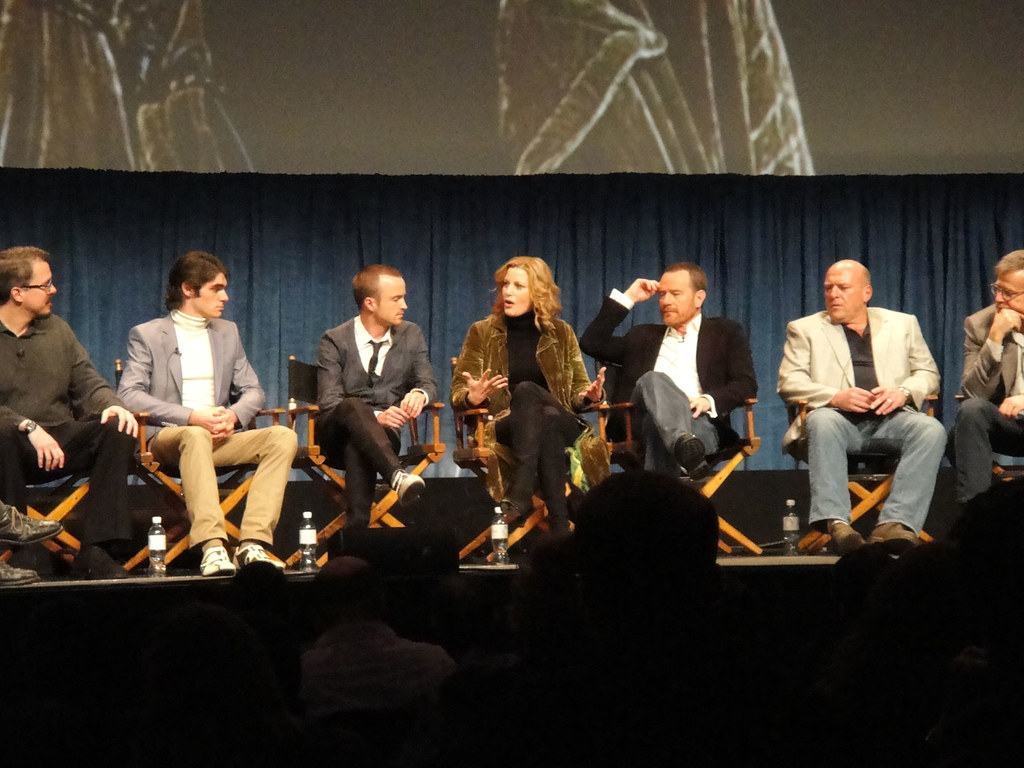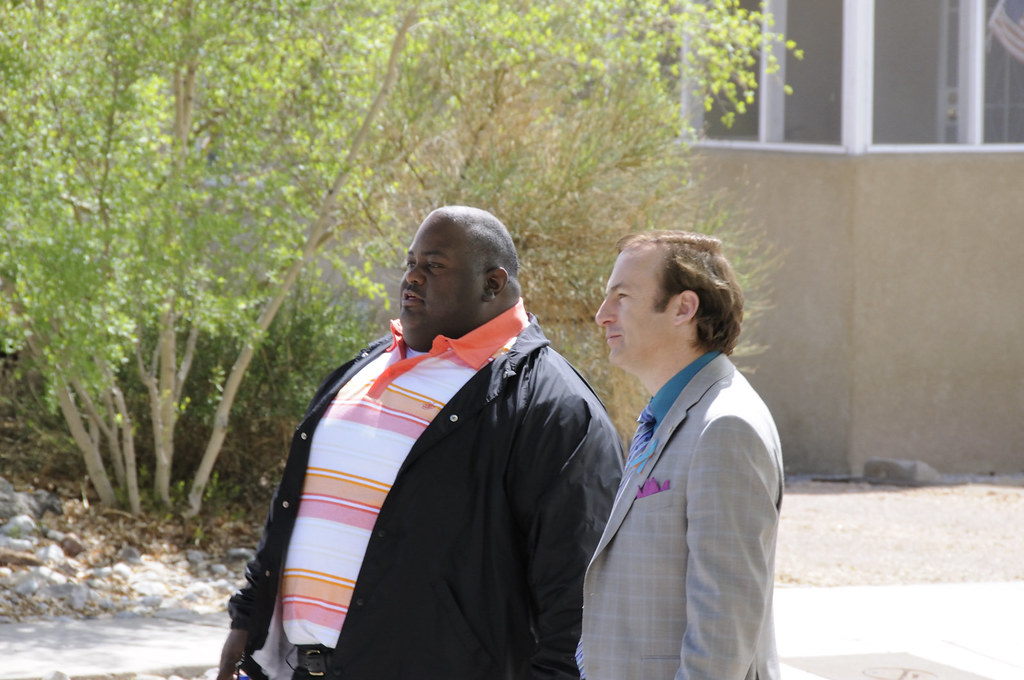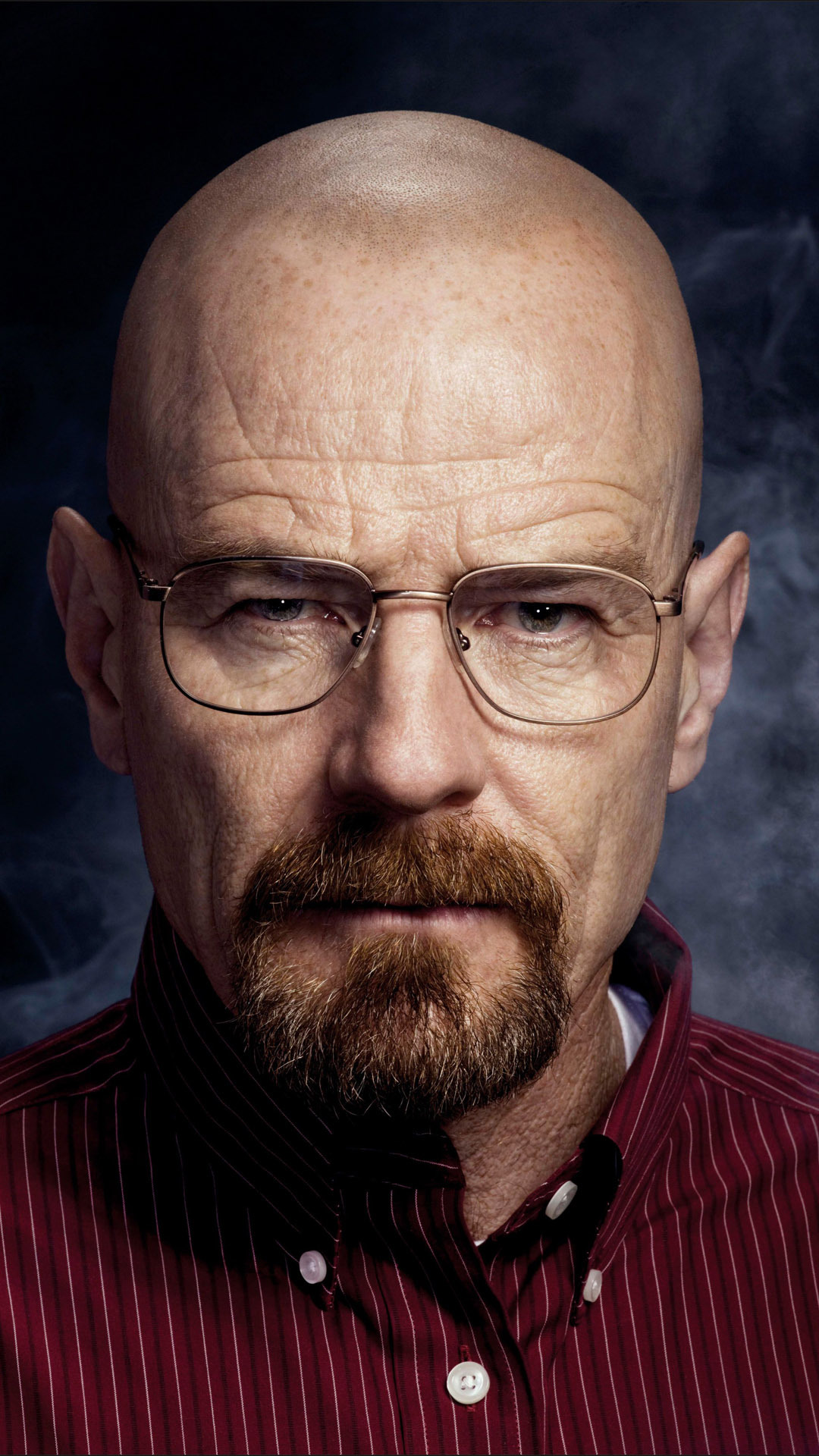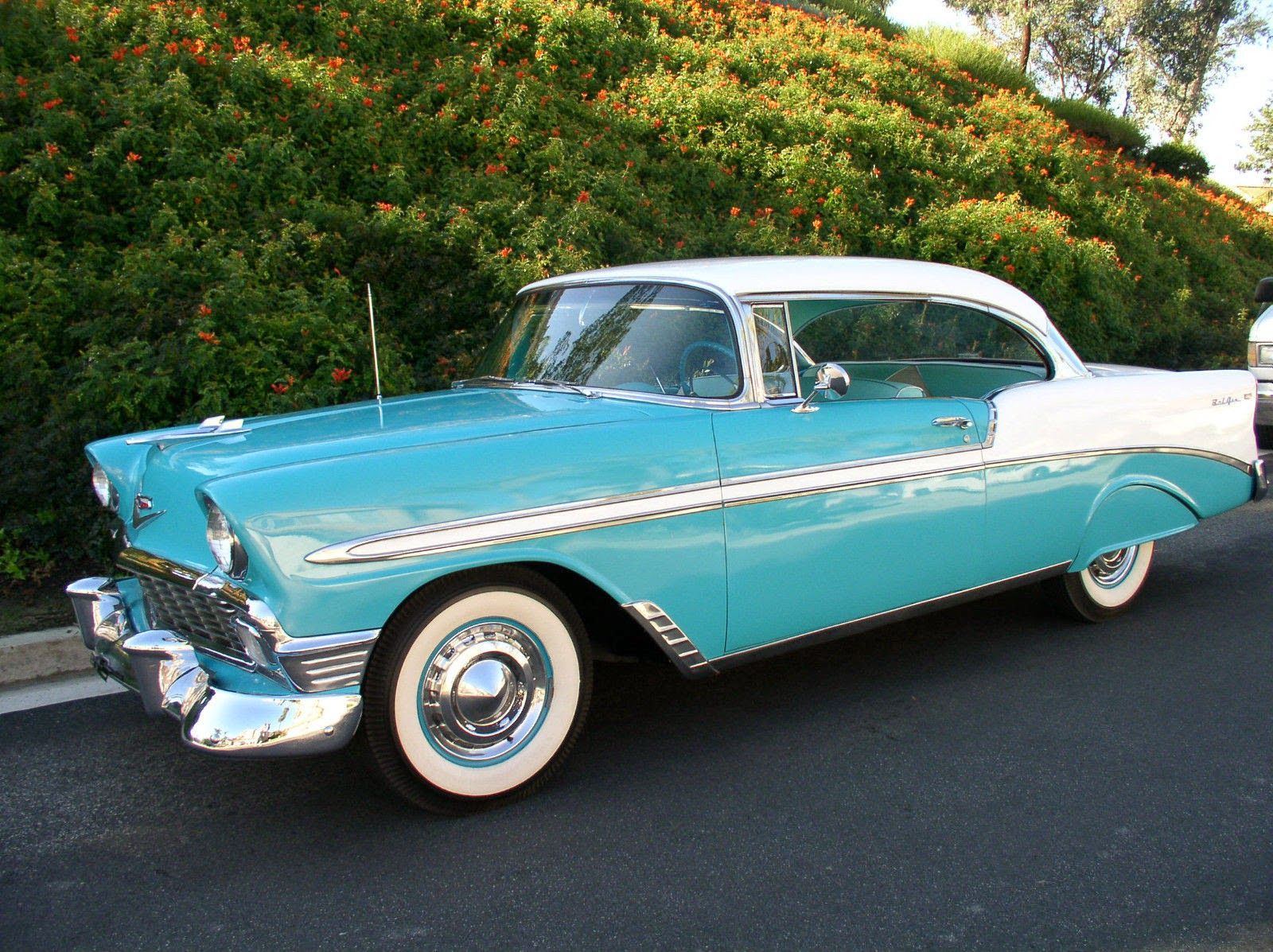
When *Breaking Bad* first appeared in 2008, it wasn’t just a TV series but a full-blown cultural phenomenon, captivating audiences with its gripping storyline and complex characters. Be it Jesse Pinkman’s iconic “Yeah, science!” moments or Walter White’s slow-burning transformation into Heisenberg, the scenes are meticulously crafted to leave an indelible mark. But if you thought the desert standoffs or blue meth were the only scenes worth obsessing over, you must think again. Vince Gilligan, the writer, has filled the series with hidden callbacks, clever smirks, and subtle shadowing, turning every rewatch into a treasure hunt for discerning viewers.
Indeed, with every *Breaking Bad* rewatch, something new unlocks; yes, that’s how insanely detailed the story is. Vince Gilligan went all out, layering in so many dimensions that fans are still dissecting scenes over a decade later. The Easter eggs drop hints about what’s coming, while the references nod to iconic works that inspired it all. Walter White is so complex that even he might struggle to figure out what he really wants. But the subtle clues hidden in plain sight give us a glimpse into his true nature. After all, no matter what someone does, at the core of it, it’s what he wanted all along, right? His relationships, intentions, and motivations are all meticulously foreshadowed through these cleverly placed Easter eggs.
Every masterpiece is built on the shoulders of others, and Gilligan doesn’t hold back on the tributes. From *The Godfather* to *Pulp Fiction*, the show is packed with references you might have totally missed, enriching the viewing experience for those who catch them. These fascinating details prove why fans still dissect *Breaking Bad* more than a decade later—it wasn’t just a show, it was a masterclass in storytelling. So, let’s activate our inner Hank Schrader detective skills and dive into some of the most mind-blowing *Breaking Bad* facts and Easter eggs that you undoubtedly missed.

1. Walter White’s Trousers
Let’s take a trip down memory lane and get back to the very first episode of the series. Remember when Walter, embarking on his first cook with Jesse, lost his trousers in the vast New Mexico desert? Walter strips his beige trousers, and they go flying off into the arid landscape, becoming an almost comedic, yet profoundly symbolic, opening sequence to the legendary show. This seemingly minor detail sets the stage for a journey where Walter continually sheds parts of his former life.
Fast forward to Season 5, Episode 14, “Ozymandias,” widely considered the most devastating episode of the entire series. In a moment brimming with poetic irony and narrative symmetry, those very same trousers make an iconic return. This time, they get stuck on a cactus as Walt desperately rolls a barrel of money through the desert after another one of his meticulously planned schemes goes horribly awry, mirroring his initial desperation and loss.
Gilligan carefully uses the plot to show that the desert keeps its secrets, even if it’s just a discarded pair of pants. But the appearance of the trousers is far more than a mere callback; it is deeply symbolic. It signifies Walter’s humble persona, literally lying in the dirt, a stark contrast to the criminal empire he has built and is now losing. It’s a powerful visual cue that brings his entire journey full circle.
This subtle Easter egg serves as a poignant reminder of how much Walt has changed from that simple chemistry teacher taking his first risky, reluctant steps into the criminal underworld, to the ruthless, desperate criminal mastermind he ultimately becomes. The re-emergence of the trousers underscores the idea that, despite all his transformations and moral compromises, a part of his original self, his humble beginnings, remains buried beneath the surface, waiting for its final, inevitable reckoning.

2. The Boeing 737 Crash & Episode Titles
At the end of Season 2, a catastrophic Boeing 737 plane crashes, a horrifying event that dramatically impacts the lives of our protagonists. What makes this particular tragedy so brilliant from a storytelling perspective is that it wasn’t just a sudden, out-of-the-blue shock; Gilligan meticulously prepared us for it, ensuring that attentive viewers would recognize the signs.
This meticulous preparation comes in the form of black and white teaser scenes that begin the 1st, 4th, 10th, and 13th episodes of Season 2. These monochromatic sequences, devoid of color, serve to prepare us and subtly foreshadow the devastating consequences of the impending crash. This technique isn’t merely stylistic; it’s a narrative device used to build a sense of impending tragedy, hinting that Walter White himself is heavily, perhaps even directly, involved in the chain of events leading to the disaster. It’s a creative process that *Better Call Saul* would later adopt to display Saul’s bleak future as Gene Takovic.
But wait, there’s more to this ingenious foreshadowing. The titles of those very same episodes also play a significant, almost covert, role. The episodes in question are titled “Seven Thirty-Seven,” “Down,” “Over,” and “ABQ.” If we decipher these names and string them together, they form a chilling, almost journalistic sentence: ‘Boeing 737, down, over Albuquerque’ – the very city where *Breaking Bad* is set and where the tragic event unfolds.
This method of foreshadowing is a masterclass in narrative design, keeping fans both curious and slightly prepared for what’s coming next, even if they can’t quite piece together the full picture until it’s revealed. It’s a testament to the show’s intricate planning, transforming what might seem like random titles into vital clues that deepen the viewer’s engagement and appreciation for the overarching narrative. The combined visual and textual clues create a sense of unavoidable destiny that permeates the entire season.

3. The Pink Teddy Bear
This particular *Breaking Bad* Easter egg might call for some passionate debate, as its symbolism is both eerie and open to interpretation, yet undeniably significant. We’re talking, of course, about the infamous, not-so-adorable weird pink teddy bear. In the premiere of Season 2, the teddy falls eerily from the sky into Walt’s swimming pool, a perplexing image that immediately establishes a sense of unease and foreboding. It’s a splash of surrealism in an otherwise grounded criminal narrative.
What makes this teddy bear so unsettling, even from its first appearance, is its significantly disfigured state. It looks like it has been through a traumatic event, specifically featuring one eye missing and a body that appears half-burnt. This grotesque appearance grabs the viewer’s attention, leaving them wondering about its origin and what dark event it represents. Its mangled form is not just a random prop; it is a meticulously crafted detail designed to evoke specific associations.
It might initially look like an out-of-the-blue scene, but its presence is actually a chilling foreshadowing of Gus Fring’s death in the iconic Season 4 episode, “Face Off.” Remember what made us so uneasy when we looked at the teddy bear’s damaged face? It’s the missing eye and the half-burnt facial appearance that uncannily matches Gus’ horrifying look in his final moments, right after his explosion. The parallel is undeniable and deeply unsettling.
While this connection has not been officially confirmed as the sole meaning by the creators, the visual similarity is too strong to ignore for many fans. The pink teddy could very well be foreshadowing the kingpin’s eventual demise in a subtle yet profoundly impactful way. This Easter egg highlights the show’s commitment to weaving subtle visual metaphors into its narrative tapestry, where even seemingly innocuous objects carry significant thematic weight and ominous predictions.
Read more about: Beyond the Blockbusters: 13 ’60s Movie Stars Who Deserved More Hollywood Immortality

4. The Aircraft Controller Walter White
The devastating plane crash that occurs at the end of Season 2 is not only a pivotal plot point but also contains an eerie, real-world parallel that adds another layer of grim synchronicity to *Breaking Bad*. The fictional incident within the show is quite similar to the tragic 1986 Cerritos mid-air collision, which saw a commercial airliner and a private plane collide over California, resulting in numerous fatalities. This real-life disaster was a significant event in aviation history.
What makes this connection truly chilling, and a profound Easter egg for those in the know, is a detail related to the real-life event. The name of the junior air traffic controller who was guiding the DC-9 before the actual 1986 Cerritos crash was “Walter White.” Yes, you read that correctly – the same name as our protagonist, the chemistry teacher turned drug lord. This coincidence is almost too perfect to be believed.
Whether this was merely an astonishing coincidence that the show’s creators discovered and leaned into, or a deliberate, subtle act of referencing from Vince Gilligan’s meticulous mind, remains a subject of ongoing debate among fans. Regardless of intent, the eerie fact that a real-life air traffic controller named Walter White was involved in a similar disaster adds a layer of profound, unsettling resonance to the fictional events of the series. It’s definitely a highlight of the show’s intricate connections.
This detail transforms a fictional tragedy into something that feels deeply connected to a hidden, almost predestined, reality. It underscores the pervasive sense of fate and consequence that underpins *Breaking Bad*’s narrative, suggesting that even beyond his direct actions, Walter White’s name itself is intertwined with catastrophic events. This deep cut offers a fascinating glimpse into the layers of reality and fiction that Gilligan deftly blurs.

5. Felina’s Hidden Meanings
As you might anticipate, the title of the very last episode, “Felina,” is far more than just a clever anagram of the word “finale”; it is arguably one of the most powerful and multi-layered episode titles in the entire series. Kicking off the discussion with this final episode, it encapsulates the meticulous narrative design that *Breaking Bad* is known for. Its titles are consistently packed with hidden meanings, and the grand finale is no exception, serving as a culmination of this artistic choice.
But hold on, there’s even more to unpack from this deceptively simple title. The word “Felina” can be broken down into its constituent molecular symbols: “Fe Li Na.” These symbols correspond to Iron (Fe), Lithium (Li), and Sodium (Na) on the periodic table. In essence, this chemical breakdown directly translates to blood, meth (amphetamine), and tears. Did you get chills from that revelation? Many fans certainly do, as it perfectly encapsulates the core elements of Walter White’s tumultuous journey and its devastating conclusion.
Beyond its profound chemical symbolism, “Felina” also refers to a woman named “Faleena” who appears in the song “El Paso,” which plays throughout the episode as Walt makes his final preparations, including rigging his machine gun. In the classic country ballad “El Paso,” a man goes back to the place where he is “wanted” by the law, all to find the lady he loves, Faleena. This lyrical parallel perfectly mirrors Walter’s own return to Albuquerque, a city where he is a notorious fugitive, all for a final, twisted act of love and retribution for his family, and perhaps, for his blue meth, his true love.
This layered meaning underscores the meticulous narrative design, where even a single title can carry the weight of an entire journey, synthesizing Walter’s motivations, his criminal enterprise, and the emotional wreckage he leaves behind. It’s truly mind-blowing to consider how deeply Gilligan wove these threads together, ensuring that the finale’s title was not just a clever wordplay but a comprehensive summary of Walter White’s life and death, leaving no stone unturned in its symbolic richness.

6. Walter White’s Color Template
*Breaking Bad* writer Vince Gilligan truly has a profound appreciation and a remarkable talent for color symbolism, using it as a powerful, unspoken narrative tool throughout the series. This extends far beyond the iconic blue meth, delving into the very wardrobe choices of its characters, particularly Walter White, to subtly tell a deeper story about his internal state and moral trajectory.
As the seasons progressed, keen-eyed viewers may have observed a subtle yet stark visual transformation in Walter White’s clothing. His wardrobe choices became progressively darker and darker, mirroring his descent into criminality and moral decay. At the very beginning of the show, Walter is typically dressed in innocuous yellows and beiges, colors that denote his humble, unassuming, and often cowardly persona as a mild-mannered high school chemistry teacher struggling with his life and cancer.
However, as he embraces his alter ego Heisenberg and delves deeper into the meth empire, his attire shifts dramatically. Toward the end of the series, he is predominantly dressed in menacing browns and blacks, emblematic of his ruthless, hardened, and corrupted character. This slow hue shift is a brilliant visual indicator of how dark and gloomy his character also grows, showcasing his moral rot and transformation into a villain.
This clever stylistic choice is far more than just a costume change; it’s a brilliant visual shorthand for his transformation from a mild-mannered chemistry teacher into the ruthless drug lord Heisenberg. This subtle yet powerful artistic decision allows viewers to track Walt’s inner corruption and evolution into darkness without a single word being spoken. The wardrobe, in this context, becomes a character in itself, silently narrating his journey into the abyss, reinforcing the narrative arc with profound visual precision and making the viewer subconsciously connect with his psychological state.
Continuing our deep dive into the meticulously crafted world of *Breaking Bad*, this section explores six more hidden gems, dissecting everything from musical symbolism and cinematic tributes to character connections and ultimate downfalls, showcasing the show’s unparalleled depth and lasting impact.

7. The New Hampshire Car Plate
The final season of *Breaking Bad* is a masterclass in meticulous storytelling, tying up loose ends while still scattering meaningful clues for the eagle-eyed viewer. As Walter White’s empire crumbles and his options dwindle, his eventual escape to the snowy isolation of New Hampshire marks a new, albeit temporary, chapter in his saga. It’s here, in his stark exile, that a seemingly minor detail offers a profound summation of his and Jesse’s intertwined fates, a poignant echo of the series’ overarching themes of freedom and destiny.
During Walt’s time in hiding, the camera lingers on a New Hampshire license plate, bearing the state’s famous, unyielding motto: “Live Free or Die.” This isn’t just random background dressing; it’s a potent, almost prophetic, visual cue that speaks volumes about the diverging paths of the show’s two central figures. What makes this so brilliant is how it distills their entire journey into a single, powerful phrase, a testament to Vince Gilligan’s genius for weaving profound meaning into the fabric of the show.
For Walter White, “Live Free or Die” ultimately translates to his own demise, a final, desperate act to secure his family’s future before succumbing to his chosen path and his cancer. His “death” is arguably the price of his twisted pursuit of freedom and control, a grim, inevitable conclusion to his transformation into Heisenberg. Conversely, for Jesse Pinkman, the phrase resonates with a bittersweet triumph. After enduring unimaginable torment and being enslaved by Todd and the neo-Nazis, Jesse ultimately escapes, literally driving off into an uncertain but open future, embodying the “live free” half of that powerful motto.
This subtle Easter egg, therefore, isn’t just a nod to a state slogan; it’s a narrative encapsulation, a cleverly placed piece of symbolism that reinforces the ultimate destinies of Walter and Jesse. It shows how profoundly their lives diverged, even as they began on the same dangerous path. The license plate serves as a powerful, understated reminder of the choices they made and the prices they paid, cementing *Breaking Bad*’s reputation for unparalleled narrative depth and its ability to condense epic journeys into a single, striking image.
Read more about: Navigating the Road Ahead: Unraveling Emissions Regulations for Classic American Cars

8. Walter White and Heisenberg’s End
One of the most chilling and deeply symbolic moments in *Breaking Bad* occurs not in a hail of bullets or a fiery explosion, but in the quiet, visceral agony of Walter White. Fans will vividly recall the scene in Season 4’s “Crawl Space” where Walt, having discovered Skyler’s colossal mistake, collapses into an uncontrollable, guttural laugh while lying on the floor. It’s a moment that sends shivers down the spine, a terrifying glimpse into the abyss of his unraveling psyche.
This manic laughter, initially seeming like a breakdown, can be interpreted as the symbolic “death” of Walter White, the meek chemistry teacher. It signifies his complete surrender to the ruthless, amoral persona of Heisenberg, a moment where the last vestiges of his former self are shed, replaced entirely by the monster he has become. The scene is raw, unsettling, and incredibly powerful, showcasing Bryan Cranston’s phenomenal ability to convey a character’s total psychological transformation.
In a stroke of narrative genius, this very scene finds a powerful echo in the series finale, “Felina.” As a dying Walt, sprawled on the floor of the meth lab, surveys the remnants of his empire, a subtle, almost imperceptible smile plays on his lips. This mirroring isn’t accidental; it’s a deliberate callback that brings his journey full circle, showcasing the meticulous planning that went into the show’s narrative arc, connecting his beginning as Heisenberg to his end.
Many viewers interpret this final, faint smile as the “end” of Heisenberg, the ruthless drug lord. Unlike the earlier scene where Walt’s laughter signaled Heisenberg’s birth, this quiet smile, coupled with his impending death, suggests a sense of peace or satisfaction. He has achieved his final goal – protecting his family, however misguidedly – and is now ready to face the consequences. These two floor-lying moments serve as powerful bookends to Walter White’s criminal career, deeply exploring identity and consequence.

9. Walter Pays Respect to Crazy 8 and Gus
One of the most unnerving aspects of Walter White’s descent into villainy is the way he subtly absorbs characteristics from the very people he despises and, ultimately, eliminates. It’s a chilling psychological detail that highlights how deeply the criminal world infiltrates his being, blurring the lines between predator and prey. This insidious transformation is showcased through subtle, almost imperceptible acts that reveal Walter isn’t just a killer, but a man haunted by, and perhaps even honoring, his victims.
Consider his first kill: Krazy-8. Before Walter is forced to strangle him, a strange bond forms between the captor and his hostage. During this tense period, Walt discovers that Krazy-8 has a particular preference for his sandwiches with the crusts meticulously sliced off. After the brutal act, Walt is seen making himself a sandwich, and in a deeply unsettling, yet telling, gesture, he cuts the crusts off, just as Krazy-8 preferred. This isn’t just a random culinary choice; it’s a profound psychological echo, a subtle tribute to the man he just killed.
This pattern of eerie mimicry doesn’t stop with Krazy-8. It extends to the formidable Gus Fring, another adversary Walt eventually brings down. As Vince Gilligan himself pointed out, after eliminating Gus, Walt is seen vomiting and putting down a hand towel to kneel on. This is “an exact visual echo of something Gus Fring did when he was vomiting to get the poison out of his system.” This mirroring is a stark visual representation of Walt stepping into the shoes of his predecessor, absorbing his enemies’ traits.
These small, almost blink-and-you’ll-miss-it details underscore *Breaking Bad*’s brilliant psychological depth. They reveal a Walter White who, despite his growing ruthlessness, is profoundly affected by the lives he takes and the moral boundaries he shatters. By adopting the habits of his victims, Walt doesn’t just eliminate them; he inadvertently allows them to leave an indelible mark on his own twisted soul, showcasing the complex, often disturbing, evolution of his character.

10. Oranges and The Godfather
Every masterpiece, it’s often said, stands on the shoulders of giants, and *Breaking Bad* is no exception. While the show forged its own groundbreaking path, Vince Gilligan and his team never shied away from paying homage to the cinematic titans that inspired their vision. Among these, Francis Ford Coppola’s *The Godfather* looms large, not just through direct mentions by characters like Saul Goodman, but through a deeply ingrained visual motif that sharp-eyed fans will instantly recognize.
In *The Godfather* saga, oranges are far more than just a refreshing fruit; they are an ominous symbol, frequently appearing in scenes that precede or accompany death, betrayal, or significant misfortune. From Vito Corleone’s attempted assassination in a fruit stand to Michael’s ominous meeting in Havana, the presence of oranges signals impending doom, a visual harbinger of the dark events about to unfold. It’s a subtle yet potent piece of cinematic language.
*Breaking Bad* cleverly picks up this symbolic baton, weaving oranges into its own narrative tapestry to signal moments of grave misfortune or critical turning points. A standout example occurs when Ted Beneke, Skyler’s former boss, suffers a life-altering fall that leaves him paralyzed. In the aftermath of this devastating accident, a pile of oranges spills around him, a striking visual echo of *The Godfather*’s grim symbolism. This isn’t merely a fleeting reference; the tradition continues into *Better Call Saul*, highlighting Gilligan’s profound appreciation for cinematic history.
The “Oranges and *The Godfather*” Easter egg is a perfect illustration of how *Breaking Bad* elevates its storytelling through sophisticated intertextual references. It’s a wink to the cinephile, a reward for the attentive viewer who recognizes the layered artistry at play. This deliberate homage not only deepens the show’s own narrative but also solidifies its place within the pantheon of great crime dramas, showing its respect for the foundations upon which it built its own iconic legacy.
Read more about: Beyond the Script: 12 Genuine Moments and Iconic Cinematic Details That Unforgettably Pull You Into the Heart of the Story

11. Baby Blue Song
Beyond the gripping narrative, the unforgettable characters, and the meticulously crafted visuals, *Breaking Bad* also shines in an often-underestimated category: its soundtrack. Vince Gilligan possesses an uncanny knack for selecting songs that don’t just accompany a scene but profoundly deepen its emotional resonance or subtly comment on a character’s internal state. Among these expertly chosen tracks, one stands out as a poignant, almost heartbreaking, final musical statement: Badfinger’s 1972 hit, “Baby Blue.”
This song plays during Walter White’s dying moments in the series finale, “Felina,” as he lies on the floor of the superlab, surveying the remnants of his life’s work. Many might initially dismiss it as just a sweet, melancholic tune picked at random to underscore a tragic end. However, as with most things in *Breaking Bad*, nothing is ever truly random. The choice of “Baby Blue” is, in fact, a deeply symbolic and brilliantly appropriate piece of musical foreshadowing and reflection.
“Baby Blue” is widely interpreted by fans as Walter White’s final, unspoken ode to his greatest creation and obsession: the pure, potent blue methamphetamine. For Walt, the blue meth wasn’t merely a product; it was his magnum opus, his legacy, his “baby.” The song’s lyrics, filled with longing and regret for a lost love, perfectly mirror Walt’s complex relationship with his criminal enterprise – a creation that gave him power and purpose but ultimately consumed him and destroyed everything he once held dear.
The inclusion of “Baby Blue” is a masterstroke in musical storytelling, transforming a seemingly simple song choice into a profound reflection of Walter White’s journey. It encapsulates his love for his “baby blue” product, the destructive path it forged, and the ultimate price he paid for his ambition. This final, melancholic melody serves as a beautiful, albeit dark, summation of *Breaking Bad*’s enduring narrative and the complex, conflicted soul of its protagonist, reinforcing its reputation for unparalleled thematic depth.
Read more about: From Reality Stardom to Silver Screen Success: 15 Stars Who Conquered Hollywood Acting

12. The White Chess in Ozymandias
*Ozymandias* is not just an episode; it’s an event. Widely lauded as the pinnacle of *Breaking Bad*, and indeed, television history, this devastating installment chronicles Walter White’s ultimate downfall with brutal efficiency. Yet, even amidst the chaos and heart-wrenching betrayals, Vince Gilligan and his team managed to embed subtle, prophetic details that, upon rewatch, reveal an astonishing depth of planning. One such hidden gem is a seemingly innocuous background detail: a chess match playing out between two firemen.
During a scene that is already emotionally charged and narratively pivotal, a chess game unfolds in the background, almost unnoticeable to viewers gripped by the unfolding drama. However, this isn’t just set dressing. The game, which never reaches a formal conclusion on screen, serves as a powerful visual metaphor for Walter White’s own strategic miscalculations and his impending, unavoidable checkmate. It’s a masterclass in visual storytelling, where a subtle detail speaks volumes about the protagonist’s fate.
Upon closer inspection, sharp-eyed fans will notice the specific state of the board: the white king is cornered, surrounded, and precariously close to checkmate. This particular arrangement perfectly mirrors Walt’s own dire predicament. He, too, is the “white king”—a powerful figure who has built an empire but is now isolated, exposed, and on the verge of total defeat. The game reflects the inevitability of his collapse, foreshadowing that his meticulously constructed world is crumbling around him, piece by agonizing piece.
This brilliant Easter egg within *Ozymandias* underscores the show’s intricate craftsmanship and its commitment to weaving profound meaning into every frame. It transforms a background element into a potent piece of foreshadowing, demonstrating how Walt’s ambition led him to a strategic corner, leaving him exposed and vulnerable. The white king’s position on the board serves as a haunting, silent commentary on Walter White’s journey from a calculated player to a king utterly defeated, cementing the episode’s legacy as a narrative masterpiece.
From trousers lost and found to a final, tragic “Baby Blue” serenade, *Breaking Bad*’s enduring legacy isn’t just in its explosive plotlines or unforgettable performances. It resides in its breathtaking attention to detail, its deep well of symbolism, and its willingness to embed profound meaning into every frame, every musical cue, and every passing reference. Vince Gilligan didn’t just tell a story; he crafted a universe, a meticulously layered tapestry where every rewatch peels back another dimension, revealing new insights into the moral decay of Walter White and the intricate web of consequences he spun. So, whether you’re catching a subtle *Godfather* nod or dissecting the fate of a chess piece, one thing is clear: the hidden brilliance of *Breaking Bad* ensures that its narrative genius will continue to be debated, celebrated, and discovered for generations to come. It’s a show that truly rewarded its audience’s intelligence, proving that sometimes, the most revealing details are the ones hiding just beneath the surface, waiting for you to unearth them.



